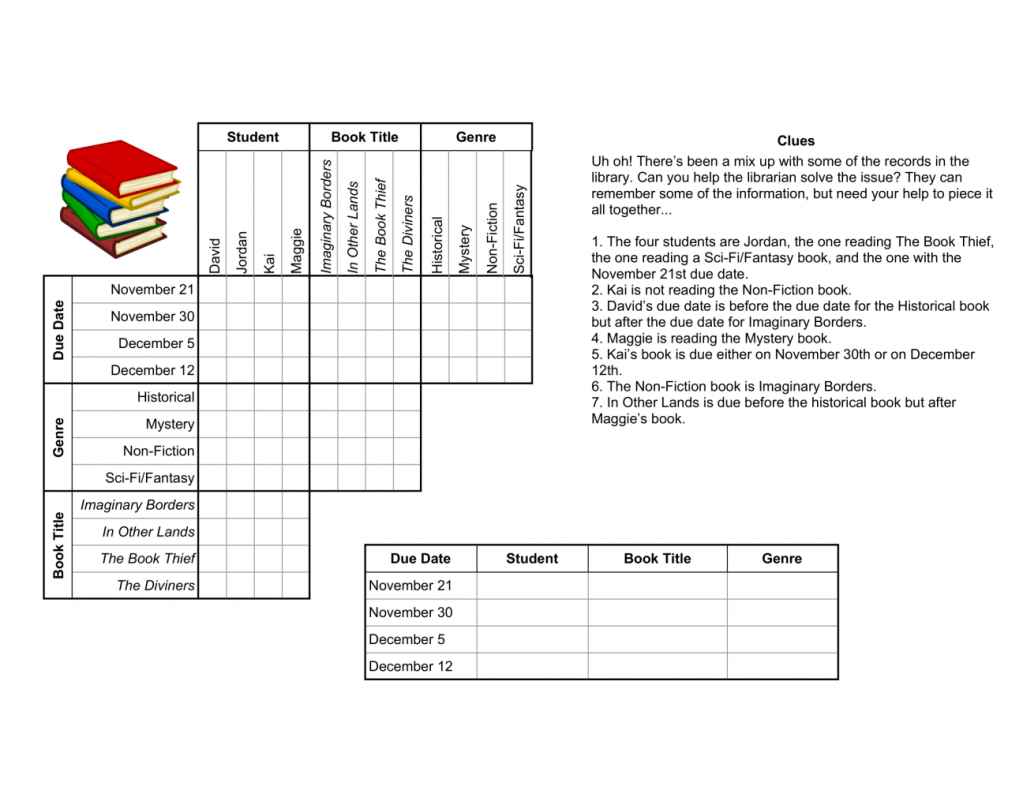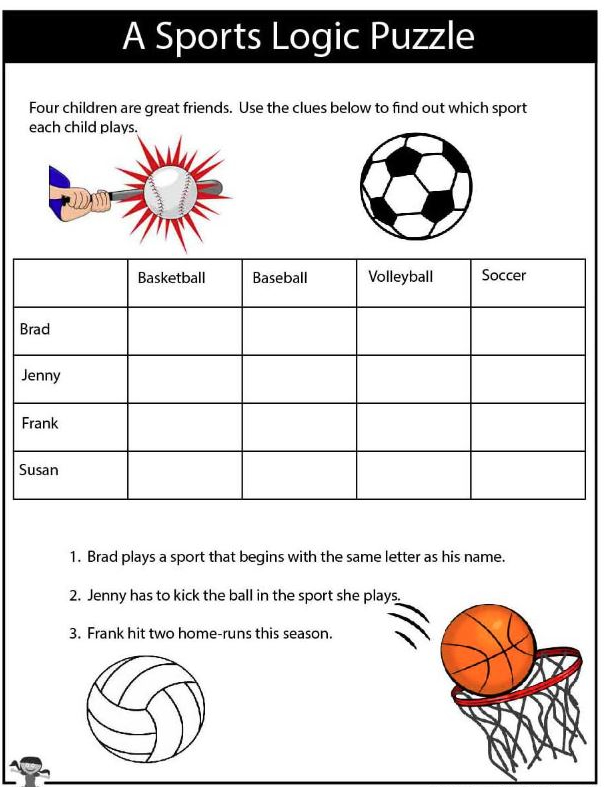Last summer, I read the book Common Ground by Dr. Florencia Henshaw and Maris Hawkins. In this book, the authors discuss principles of language acquisition and how those transfer to classroom practice. One section of the book talks about the fact that language is only considered to be comprehensible input (CI) if it contains a message with a purpose. Many language teachers have known this for some time now and have replaced language drills without a message with language that has a purpose. As I read this passage in the book, the authors talked about some common language purposes that many of us who teach with comprehensible input are familiar with, such as telling a story or delivering content-based instruction. But then I came across a purpose that I had not thought of, which was to use language to solve a logic puzzle.
I am a huge logic puzzle nerd and have been doing logic puzzles on and off since high school (In fact, when I took the SAT, we had an experimental section that measured logic. I crushed it with a score of 780 thanks to all the logic puzzles I did. They discontinued the logic test pretty quickly but I’m still proud of that score). I was intrigued by this idea and decided to try it.
To start, I googled “Logic Puzzles for Kids” on the Internet. I found some examples which I then translated or adapted into French. Then Joshua Cabral from World Language Classroom published some logic puzzle templates. This made creating logic puzzles for my French students even easier.
For those unfamiliar with logic puzzles, let me talk a bit about what they look like and their premise. Logic puzzles by design all include a situation and some missing information. Then people use the clues given to try to find that missing information. Logic puzzles include a grid and clues. Using the clues, students use process of elimination to find out the solution to the logic puzzle. An example of a logic puzzle in English is below.

Once students have completed the logic puzzle, we move on to interpersonal speaking. Before I move on, let me stop and tell you what I have learned about interpersonal speaking. First, it is important to remember that interpersonal speaking is spontaneous and unrehearsed. Over the years I have seen many teachers say that a speaking activity is interpersonal when it is actually not. Any times students speak while simultaneously reading off a paper or if they rattle off language that has obviously been memorized, it is presentational. Second, the speaking can only be called interpersonal speaking if a message is being conveyed. That’s why substitution drills in a textbook cannot be considered interpersonal speaking because there is no communication. Finally, when teachers plan interpersonal speaking activities, they are usually planning for conversations between two or more students. Quite often what happens is the group of students start speaking in the target language but then they switch to their native language. This is especially true for students in the lower levels, who do not have the language proficiency to sustain a conversation in the target language for that long.
In my classes, I overwhelmingly prefer leading a conversation with the whole class. This allows me to make sure we stay in the target language as well as offer support and structure to my students. This is still interpersonal conversation because it is spontaneous and unrehearsed. I often do this after students complete a logic puzzle because it gives us a topic to talk about.
Let’s use the logic puzzle above as and example. If I gave a copy of this logic puzzle to my students in the target language, students would try to solve it and then we would review the answers as a whole class in the target language. Then I would ask students follow-up questions based on the topic. In this case, I might ask them whether they have read any of the books listed on the logic puzzle, what type of books they like to read, and what additional activities they enjoy doing. I might even reinforce how to say dates in my target language by asking students when their birthday is.
If you decide to try this in your class and have never filled out a logic puzzle before, I recommend you read this post. In addition, I highly recommend doing the first few logic puzzles as a whole class so students understand how to fill out the grid. I also recommend that you keep the logic puzzle pretty simple since more advanced ones can take up too much time. I usually start with the simplest logic puzzles possible, like the one below.

Another reason I enjoy giving students logic puzzles to do is because it is easy for students to learn how to solve them. Some students, especially those with low self-esteem, benefit from being able to solve a logic puzzle successfully because it makes them feel good about themselves. These days, with the number of students who are dealing with the psychological ramifications of early adolescence and pandemic trauma, being successful is good for the ego.
If you are interested in some ready-made logic puzzle, check out the two items I’ve posted in my TPT store. Happy logic puzzle solving!
Merci beaucoup! Great ideas 🙂
LikeLike